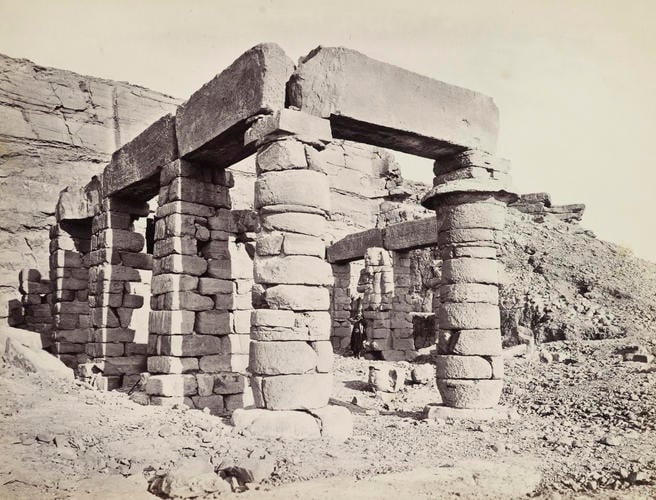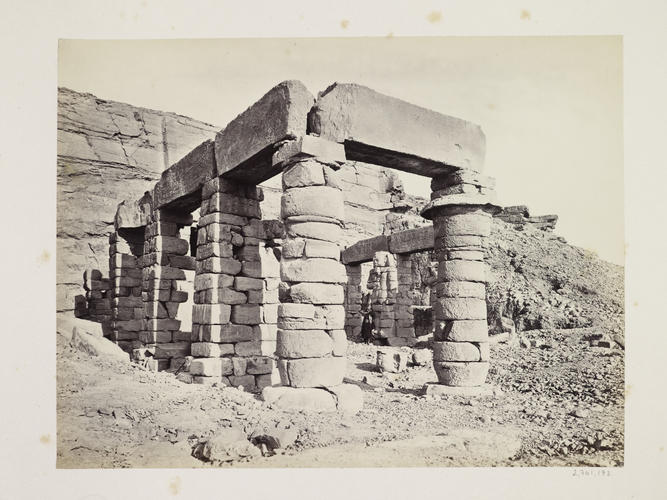-
1 of 253523 objects
Another view of the temple of Gerf-Hossayn 1857-59
Albumen print | 15.7 x 20.6 cm (image) | RCIN 2701172
-
View of the peristyle court of the temple of Gerf Hussein, in Nubia, still in situ with its eight Osiris pillars and two of the columns. A local man is standing in front of one of the pillars towards the back of the court, while an upside down head of Osiris from one of the pillars is visible in middle ground. The temple of Gerf Hussein was a partially rock-cut complex built by Setau, the Viceroy of Kush during the reign of Rameses II (1279-1213 BC), and dedicated to Ptah, Ptah-Tatenen, Hathor and the deified Rameses II. The free-standing elements of the complex (pylon, courtyard and peristyle court) were moved in the 1960s by UNESCO as part of a large project to save a series of ancient monuments from the rising waters of Lake Nasser, following the construction of the Aswan High Dam. The rear portion of the temple which was cut into the rock and, similarly to the temples at Abu Simbel, had a pillared hall with two rows of three statue pillars and various chapels and niches, was left in place and it is now under the waters of Lake Nasser.
Provenance
Acquired by King Edward VII when Prince of Wales
-
Creator(s)
(photographer)(publisher)Acquirer(s)
-
Medium and techniques
Albumen print
Measurements
15.7 x 20.6 cm (image)
37.5 x 28.0 cm (page dimensions)

